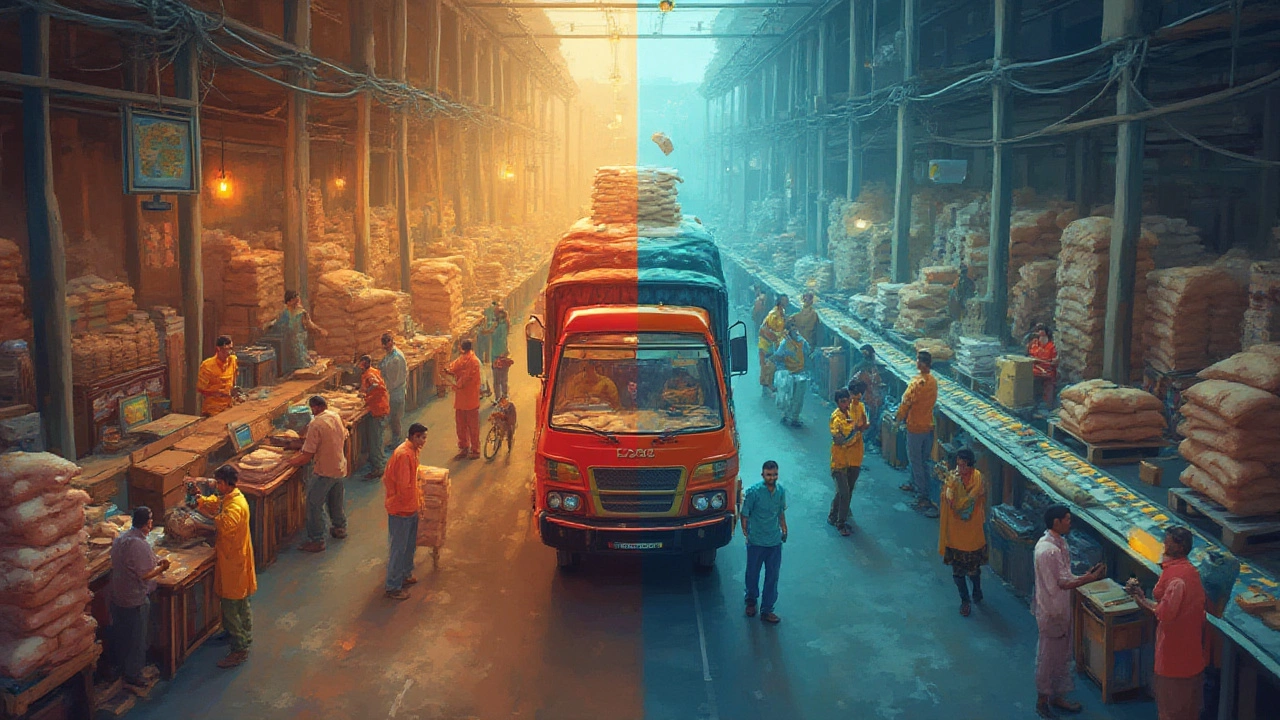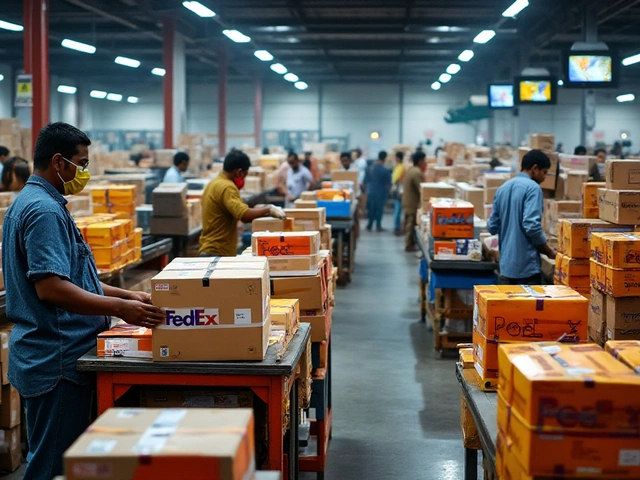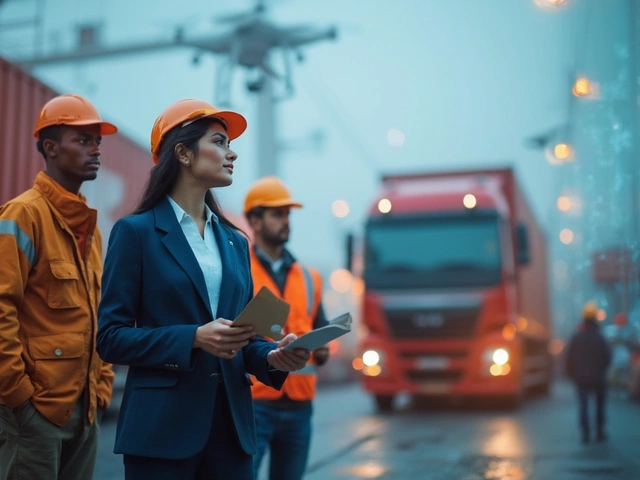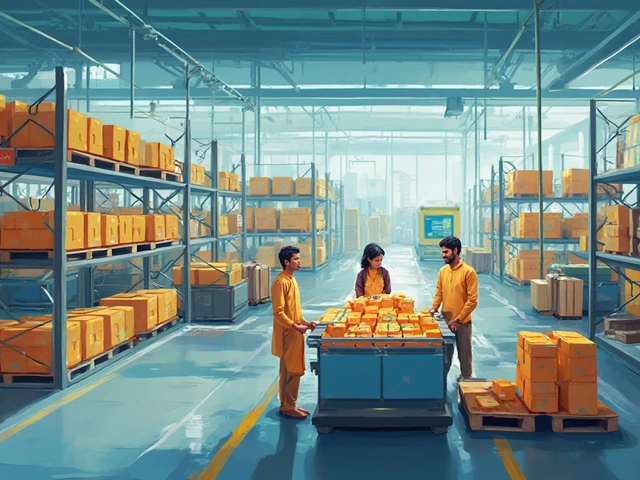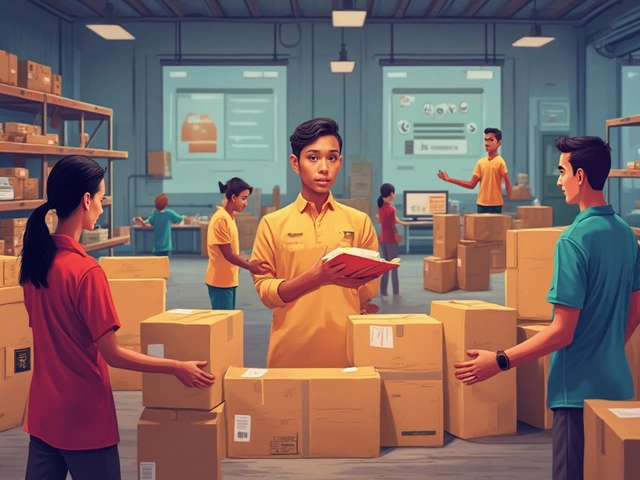Picture this – it’s the middle of the night, you’re scrolling through your phone, and you spot a flash sale on shoes. With a few taps, your new kicks are on their way, probably from a warehouse hundreds of miles away, destined for your front door in just a day or two. That seamless magic? It’s not just logistics as our parents knew it. We’re living in the age of the digital supply chain—where e-logistics is giving a new face (and a whole lot of tech) to moving goods from point A to B. The question everyone’s asking: is there a real difference between logistics and e-logistics, or is it just new hype for the same old trucking and shipping? Let's spell it out clearly and keep it practical.
Old School vs. Digital: What Sets Logistics and E-Logistics Apart?
Traditional logistics is built on a straightforward model: get goods from where they’re made to where they’ll be sold or used. We’re talking everything from managing inventory in warehouses, coordinating trucks and trains, juggling stacks of paperwork, and making sure nobody loses their mind in the process. Think about the classic warehouse filled with workers and forklifts, clipboards everywhere, phone calls flying back and forth to get one pallet moved from aisle 3 to a backdoor loading dock.
E-logistics, on the other hand, is that old world supercharged by technology. Instead of paper records and phone tag, you’ve got digital control towers tracking shipments in real time, automated robots zipping around warehouses, and apps handling orders while you sleep. It’s the backbone of all those two-day and same-day deliveries that online shoppers now consider standard. The whole chain—from receiving your online order, to picking, packing, delivery, and even returns—runs off digital systems that talk to each other constantly.
| Aspect | Traditional Logistics | E-Logistics |
|---|---|---|
| Order Processing | Manual, phone/fax/email | Automated, online platforms |
| Inventory Tracking | Paper-based, periodic checks | Real-time digital tracking (RFID, barcodes) |
| Customer Interaction | Indirect, delayed updates | Instant notifications, tracking links |
| Scale | Mainly B2B, bulk shipments | Both B2B and B2C, small parcels common |
| Returns & Reverse Logistics | Slow, paperwork-heavy | Integrated, customer-friendly portals |
| Data Analysis | Rare, historical data | Live analytics and predictions |
Instead of one person checking a clipboard, e-logistics systems ping warehouse robots, update your app, and drop a notification so you know your package is in Kansas, even if you’re nowhere near a computer. Now, that’s a leap.
Why the Explosion in E-Logistics? The E-Commerce Boom Story
Here’s a stat to drop at the dinner table: in 2024, global e-commerce sales hit nearly $7 trillion according to Statista. With millions of people shopping online every minute, traditional methods just can’t keep up. It’s not the warehouse staff’s fault; it’s the scale and the breakneck speed that digital life demands.
Back in the day, stores would order a few pallets of something, stock shelves, and try to predict what folks might buy. If you wanted a new blender, you drove to the store, checked what was in stock, and maybe came home with a different model. But now, companies have to juggle thousands of individual orders—think of every click as a mini-shipment, with customers expecting doorstep delivery, real-time tracking, and easy returns.
Companies like Amazon, Alibaba, and even grocery stores are throwing tech at the problem. They’re building “fulfillment centers” stuffed with sensors and robots, using algorithms to predict what you’ll order next. E-logistics not only delivers the goods; it powers services like real-time customer chat, AI-driven order picking, and mobile inventory scanning. It’s hard to imagine this level of speed and accuracy without a digital backbone.
- About 69% of consumers put faster shipping times at the top of their online wishlist, according to a 2023 McKinsey report.
- Same-day delivery services now account for almost 25% of e-commerce shipments in big cities.
- Returns have spiked, too – nearly 30% of online purchases are sent back, so e-logistics handles not just “to you” but “back from you” as smoothly as possible.
This data spells out why e-logistics is more than a new label for an old job—it’s a digital transformation that lets companies handle millions of orders at once with fewer mistakes and much faster delivery.
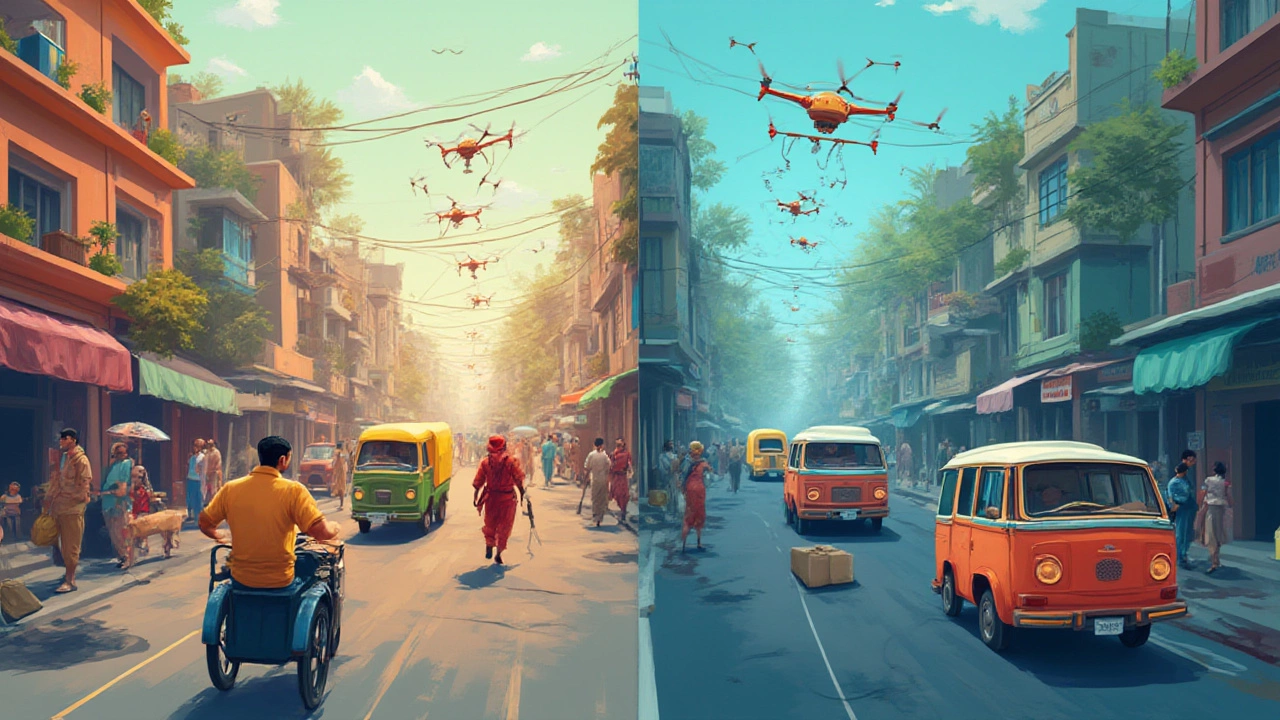
The Tech Behind E-Logistics: Turning Hype Into Reality
If you think e-logistics is just a website on top of shipping, think again. It pulls together some of the coolest modern tech—much of it invisible to buyers but game-changing for businesses. For starters, cloud computing lets companies store and access mountains of data from anywhere. Algorithms sort orders not just by what’s fastest, but by what is cheapest, greenest, or most reliable at any moment. GPS and IoT sensors allow every package to be tracked “live,” so you know if it’s sitting in a warehouse or stuck in traffic. My own experience ordering a birthday gift for my wife showed me exactly how detailed this gets: not only did I see the delivery van’s location, but the app alerted me when the driver was five houses away. That’s a small slice of the “always visible” e-logistics approach.
Of course, automation does the heavy lifting. Robots sort, pick, and pack at mind-blowing speeds. One Amazon fulfillment center can process more than a million packages per day, with teams of robots weaving between human workers like well-trained dogs. Warehouse management systems automatically reorder stock as it runs low, so you almost never see “sold out” notices unless something is wildly popular. And then there’s AI—able to forecast sales spikes, spot bottlenecks before they clog things up, and suggest route changes if a storm hits or a driver is delayed.
Another biggie is integration with online stores, payments, and customer support. When you buy something online, your order info flies through several systems—inventory, payment, packing, and shipping—without a human hand in the mix. This leads to fewer errors and lets businesses scale up insanely fast, especially during sales events like Black Friday when order volumes can skyrocket overnight.
Customer Experience: How E-Logistics Sets New Standards
When talking about what customers expect today, fast shipping is just the tip of the iceberg. With e-logistics in the driver’s seat, people get way more power and visibility about their orders. Customers now want to track their package minute by minute, reschedule deliveries on the fly, and handle returns from their couch—all tasks that would make old-school logistics sweat bullets.
If you ever used to call a store to ask, “Where’s my order?” and got put on hold, you know the frustration. With e-logistics, that’s history. The moment your order is confirmed, you’re looped in: shipment picked, package moving, out for delivery, and finally, a smiley photo of the box at your door.
- By 2025, 85% of shoppers say they won’t buy from retailers with laggy or unreliable delivery. That’s a big threat if you’re still shuffling paper forms.
- E-logistics is now tied to loyalty: fast, reliable delivery boosts return shopping by over 70%, while a late package or confusing returns portal will send 40% of customers running to competitors.
- Returns, once a logistical nightmare, now run on clear digital steps—just click, print, and drop off. Some companies like Zara or Nike even offer instant refunds as soon as you show the return at a drop-off point.
Where traditional logistics kept customers outside the fence, e-logistics makes them part of the flow—you’re updated, empowered, and much more likely to come back if things go smoothly. This isn’t just customer service for tech heads; my older relatives picked up online shopping during the pandemic, and they now expect (and demand) these experiences every time.

Choosing the Right Approach: When Do You Need E-Logistics?
Not every business needs to jump head-first into the deep end of digital transformation. If you’re shipping bulk materials to factories, or handling a handful of pallets each week, classic logistics probably works just fine and might even be cheaper. But if you’re in e-commerce, or your customers expect speed and transparency, e-logistics isn’t optional—it’s survival.
As an example, a small bookstore that moved online during the pandemic quickly realized manual order processing was causing delays and mix-ups. By switching to a simple e-logistics platform with live inventory updates and auto-generated shipping labels, they cut fulfillment time in half and saw fewer shipping errors—plus, customers loved getting tracking updates right in their inbox. The tools are scalable, too: you don’t have to be Amazon to benefit from digital logistics. Lots of services let you plug in your online store and go digital without hiring a dozen new people or buying robots. In fact, plenty of small and midsize businesses use e-logistics providers who handle everything from storage to delivery for a monthly fee.
For readers thinking practically, here are a few signs you might need e-logistics:
- Your order volume is hard to track by hand
- Customers want shipping updates or fast delivery
- Returns and refunds are taking up too much time
- You want to compete with online giants
The bottom line? If you sell online, expect your customers to measure you by the newest, slickest buying experience they’ve seen. That’s why businesses everywhere—from solo Etsy shops to massive electronics retailers—are plugging into e-logistics systems. The question isn’t whether you should go digital; it’s whether you can stay in the game without it.
Traditional logistics built the foundation; e logistics is raising the ceiling. They aren’t just steps in evolution—they’re two parallel worlds, but only one is moving in real time. The next time you hit "buy now," just remember: there’s a hurricane of tech working quietly so your package knocks at your door faster than ever.
